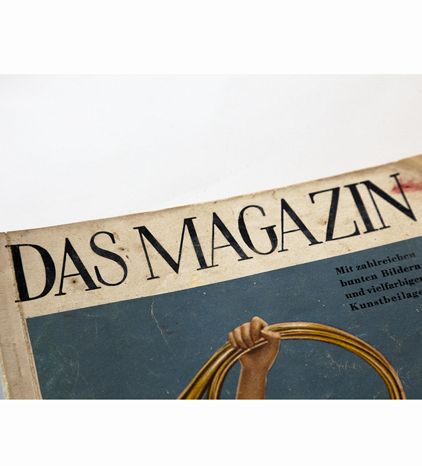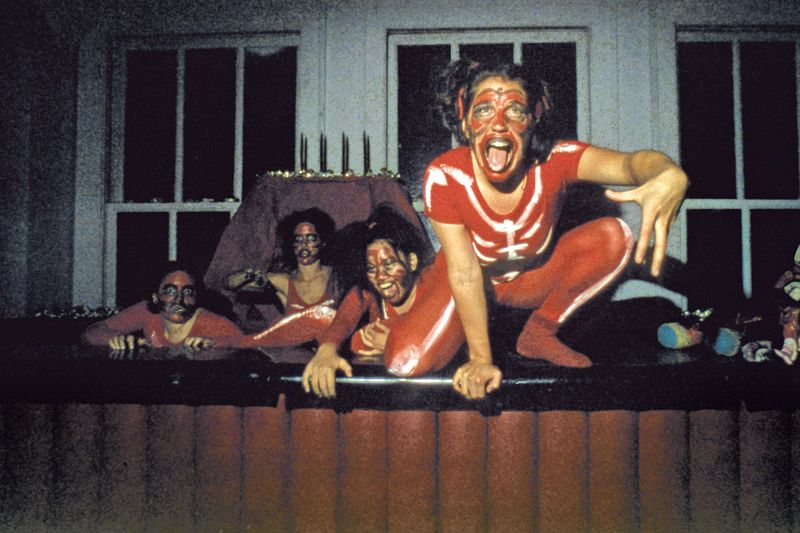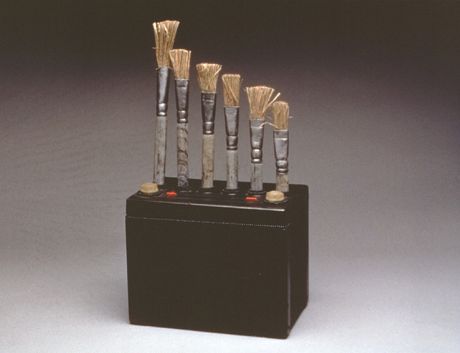Curator Katy Reis developed this proposal during the Fall 2010 Curatorial Intensive in New York.
Curators seemingly want to be artists. Architects want to be artists. I don’t know if this is an unhealthy trend or not. What disturbs me is a growing tendency for artists to be used as art materials, like paint, canvas, etc. I am uneasy about being used as an ingredient for an exhibition recipe, i.e., to illustrate a curator’s thesis. A logical extreme of this point of view would be for me to be included in an exhibition entitled “Artists Over 6 Feet 6 Inches,” since I am 6’7”. Does this have anything to do with the work I do? It’s sandpapering the edges off of art to make it fit a recipe.
So I suppose quid pro quo—yes! Let’s do a Documenta led by a team of artists. Here’s an idea—let Documenta be an exhibition using curators as raw materials.
—John Baldessari in The Next Documenta Should Be Curated by an Artist, ed. Jens Hoffmann
The artist acting as curator is certainly not a new phenomenon. Artists have been organizing exhibitions throughout history; however, in the past two decades, a growing trend has involved the artist acting as curator for a museum exhibition—a more or less direct critique of institutional roles. 4 x 4 is an exhibition series that will continue to explore this trend by inviting four artists who have presented their work at the Wexner Center for the Arts in the past 20 years to choose four emerging artists to create an installation for the Wexner Center’s lower lobby. Conceived as a way to reconnect with artists that have worked with the Wexner Center already, while maintaining its mission as an experimental laboratory for artists, 4 x 4 will facilitate a dialogue between these emerging and established groups.
Some recent examples of this growing trend include the 2010 exhibition Heat Waves in a Swamp: The Paintings of Charles Burchfield at the Hammer Museum at UCLA where Robert Gober worked with coordinating curator Cynthia Burlingham to install the exhibition; and the Hirshhorn Museum and Sculpture Garden where Rachel Harrison, Evan Holloway and Charles Long were asked to install a small selection of works from the permanent collection that were relevant to their own practice and subsequently interspersed within the 2006 exhibition The Uncertainty of Objects. And perhaps most notably, in 2004 then ICA Director of Exhibitions, Jens Hoffmann, asked over thirty artists to choose their favorite artwork created after 1947 (the year the ICA, London opened), which were then included in a group show, Artist’s Favourites.
What exactly makes these curatorial models interesting? Insight into an artist’s personal taste or social network? The influence one artist has over another? Quite simply, the most compelling aspect of this particular curatorial model is the investigation into the relationship between the artist who curates and the artist who exhibits. Often this relationship is one-sided: the younger generation selecting or installing the work of their predecessors from a specific collection. How can this model be revised for museums like the Wexner Center which operate as a Kunsthalle and focus on a less experienced generation? Much like Hoffmann’s exhibition, this proposal does not draw on a permanent collection, but rather draws on the rich exhibition history of the Wexner Center. The nominating artists, all of whom have shown their work at the Wexner Center, will be asked to recommend several promising artists to submit a proposal for the lower lobby, a space where many activities in the museum converge. On one side, visitors can find the entrance to the Film/Video Theater, dine in the café, or walk up the grand staircase to the upper lobby and ticket desk. On the opposite side is the entrance to the galleries which is flanked by the bookshop and the video space that is programmed monthly. Each nominating artist will work with the Wexner Center curator to select one of those proposals, so that a total of four projects will be presented in the lower lobby space.
Once the four proposals have been selected, the Wexner Center curator will work hand-in-hand with the nominees to actualize their projects. While the selected proposals will be organized within the structure of 4 x 4 and chosen partly for the remarkable relationships they have with one another, they will ultimately function as independent installations that take place one at a time over the course of fifteen months. By organizing the installations over a particular period of time, the work has the flexibility to vary significantly, but remain related to one another through the governing structure of the exhibition. While Hoffmann succeeded in underscoring the artist-curator’s voice by installing their text, which describes the reasons for their selection, as large as a singular introductory wall text, Hoffmann still played a crucial curatorial role. He determined how these diverse and subjective artist selections would be installed, essentially curating the dialogue between each artwork. By revising this curatorial model into a series, each installation can be visually independent and the dialogue that forms between the two groups of artists can truly become equally as important as the installation itself.
Once each installation is open, a public conversation moderated by the curator will take place between the nominating artist and the nominee to explore their similar interests, differences and their individual reactions to the work that occupies the lower lobby, ideally revealing something unanticipated and new about the relationship between the work of the nominating artist and the nominee. The proceedings from that conversation will be transcribed and printed as a brochure to accompany the exhibition and eventually compiled with the other brochures created for 4 x 4.
The goal of this alternative curatorial project is to facilitate a conversation between two artists and draw connections that may not have been realized otherwise. Assuming that the nominating artist has chosen someone that creates work related to their own work, whether as an inspirational figure, a potential successor within a particular practice, or perhaps a counterpoint to their own beliefs, the conversation will ideally allow for fruitful discussion of concepts that unite or perhaps distinguish the two. Secondarily, this curatorial model will continue the ongoing dialogue about the evolving relationships between the artist and the curator and their overlapping (or contradictory) perspectives.
Learn More
For more information on 4 x 4, please contact Katy Reis at creis@wexarts.org.






